Cruising Coast to Coast | Heavyweight Baggers Comparo Part Five
Phillip Island to Perth Cruiser Comparo – Back to Part One – Back to Part Two – Back to Part Three – Back to Part Four – Part Five – Part Six
Harley Road King, Indian Springfield, Triumph Thunderbird LT and Moto Guzzi California Touring across Australia
After arriving into the outskirts of Perth after our 4000km cross-country adventure, a few celebratory ales were enjoyed. A busy morning of cleaning and polishing the four machines greeted us in the morning ahead of a photo shoot overlooking Sorrento Beach across to the Indian Ocean. This neatly drew a line underneath our coast to coast adventure.
I encourage you to look back through the previous four instalments, links to them are above, and ‘virtually’ join us on this ride across Australia, where we have tried to capture some of the beauty in photographs.

Dealership Support & Servicing
Ahead of amassing the individual thoughts of the assembled four riders I thought it pertinent to point out the comparative servicing schedules of the four machines on test.
If going by the manufacturer’s recommended servicing regimen, the Moto Guzzi should be the cheapest to own over the long-term with service intervals of 10,000km, and major services required only every 40,000km. The Moto Guzzi also boasts a shaft-drive system, while the other three machines are belt driven.
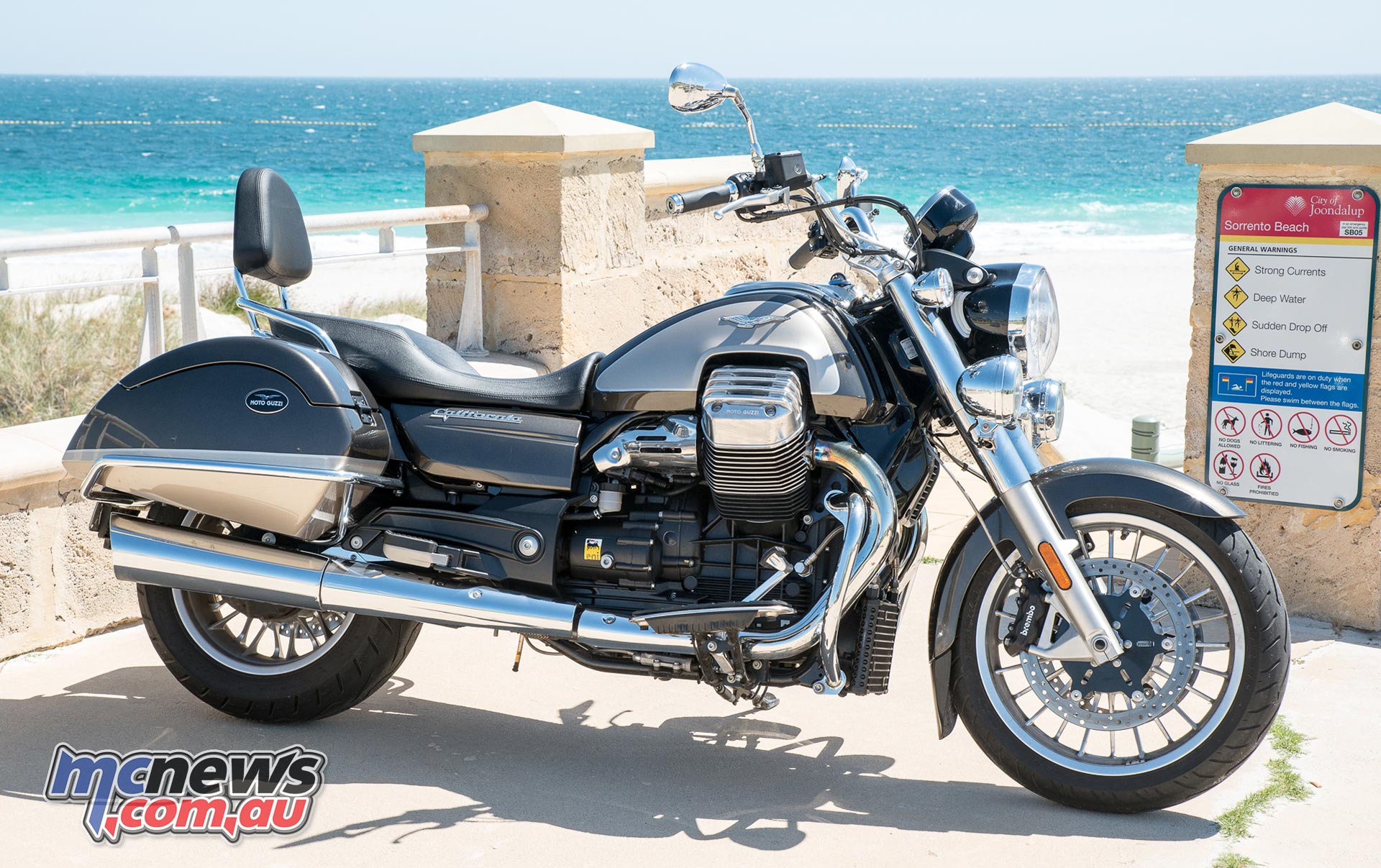
The Triumph Thunderbird LT also asks for 10,000km service intervals, but then a major service every 20,000km, twice as often as the Italian machine.
Both of the American bikes feature hydraulic lifters. Thus at major service intervals no valve clearance adjustment will be required, as their systems are essentially self adjusting. That is until the hydraulic lifters wear out and start to make too much noise, at which point you get a louder exhaust. Joking! Lifters are relatively cheap and easy to replace and can last a very long time. However, both require minor services more often, every 8000km. The Indian then requires a major service every 24,000km, while the Harley needs the big one only every 32,000km. Which probably makes the Milwaukee machine the second least expensive machine to own over the long term.
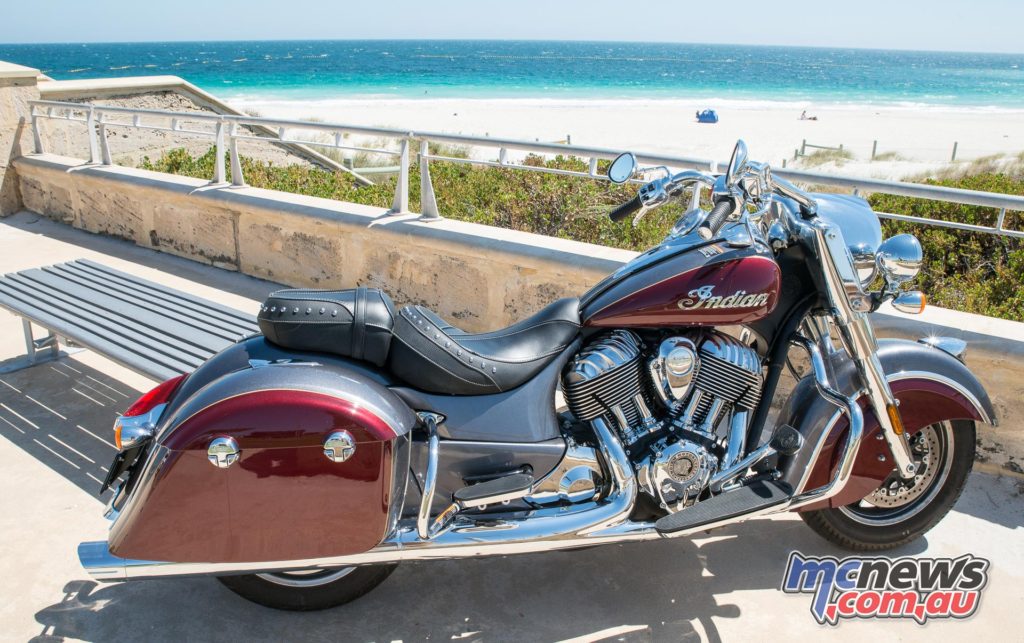
Obviously Australia is a vast country and having good sales and service backup is not always possible when out of the major cities, but a wide dealer network offers a number of advantages.
Indian, despite being the oldest brand from original production, is, due to their more recent re-introduction the market, effectively the newest member to the party. Thus Indian do have a more limited dealer network, but they are backed by the support of the Polaris group, a massive player in the Australian ATV industry. They have made a huge investment in new dealerships, which are largely owned by Indian Motorcycles Australia, and more expansion plans are afoot. Polaris also recently announced the closure of Victory, and with the parent company turning all its focus to Indian, this should benefit current and prospective Indian owners.
Peter Stevens Importers run both the Triumph and Moto Guzzi operations in Australia, the latter of which is a new addition to their stable of brands, which also includes Aprilia, Piaggio and Vespa. Triumph enjoys the largest dealer network with 45 outlets across Australia. While naturally, with a business of this size, there are those out there who have had a beef with Peter Stevens over the years, their investment in the last 18-months, particularly in regards to Triumph, promises that they have a long term vision that will include striving to achieve new levels of customer satisfaction. The senior management team has enjoyed an injection of young blood in recent times and an unprecedented level of recent investment in their brands has resulted from the change at the top.

After only recently taking stewardship of Moto Guzzi, there are some changes afoot in regards to the retail side of Moto Guzzi throughout Australia being made by P.S.I. New dealer agreements are being negotiated with the aim to have around 20 authorised Moto Guzzi dealers across the country. Moto Guzzi also have an extended network of service agents, which carry a limited supply of servicing parts, ensuring that options are available across a much larger area than their dealer network might suggest.
Harley-Davidson do, of course, have the strongest brand in the market, both here and internationally. Harley is also the biggest selling roadbike brand in Australia and their dealer network is both expansive and well entrenched. What ever is not available via genuine channels, the almost infinite array of aftermarket specialists can improve or individualise your bike to your tastes, the extent of which is only limited to the size of your wallet.
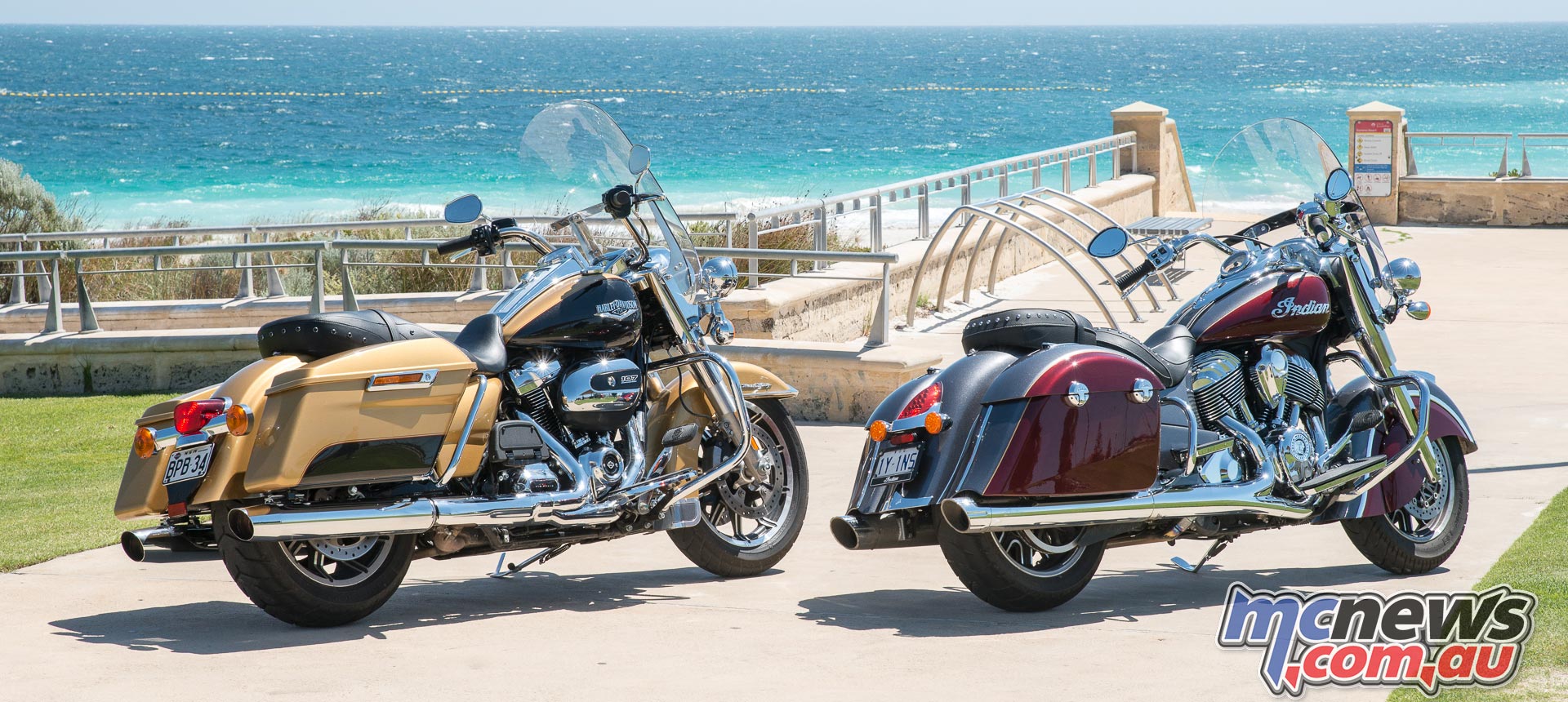
Seat Heights
A few other comparative notes of interest before we head to the conclusions also include the seat heights of the four machines. The Springfield boasts the lowest perch at 660mm, and the turn-down handlebars reinforce this low-set feeling to the rider, particularly when the screen is removed.
The Harley and the Triumph are pretty much level-pegged at 700 and 705mm respectively, while the Guzzi is the tallest of the machines at 740mm.
Seat Heights
- Indian Springfield – 660mm
- Harley-Davidson Road King – 700mm
- Triumph Thunderbird LT – 705mm
- Moto Guzzi California Touring SE – 740mm
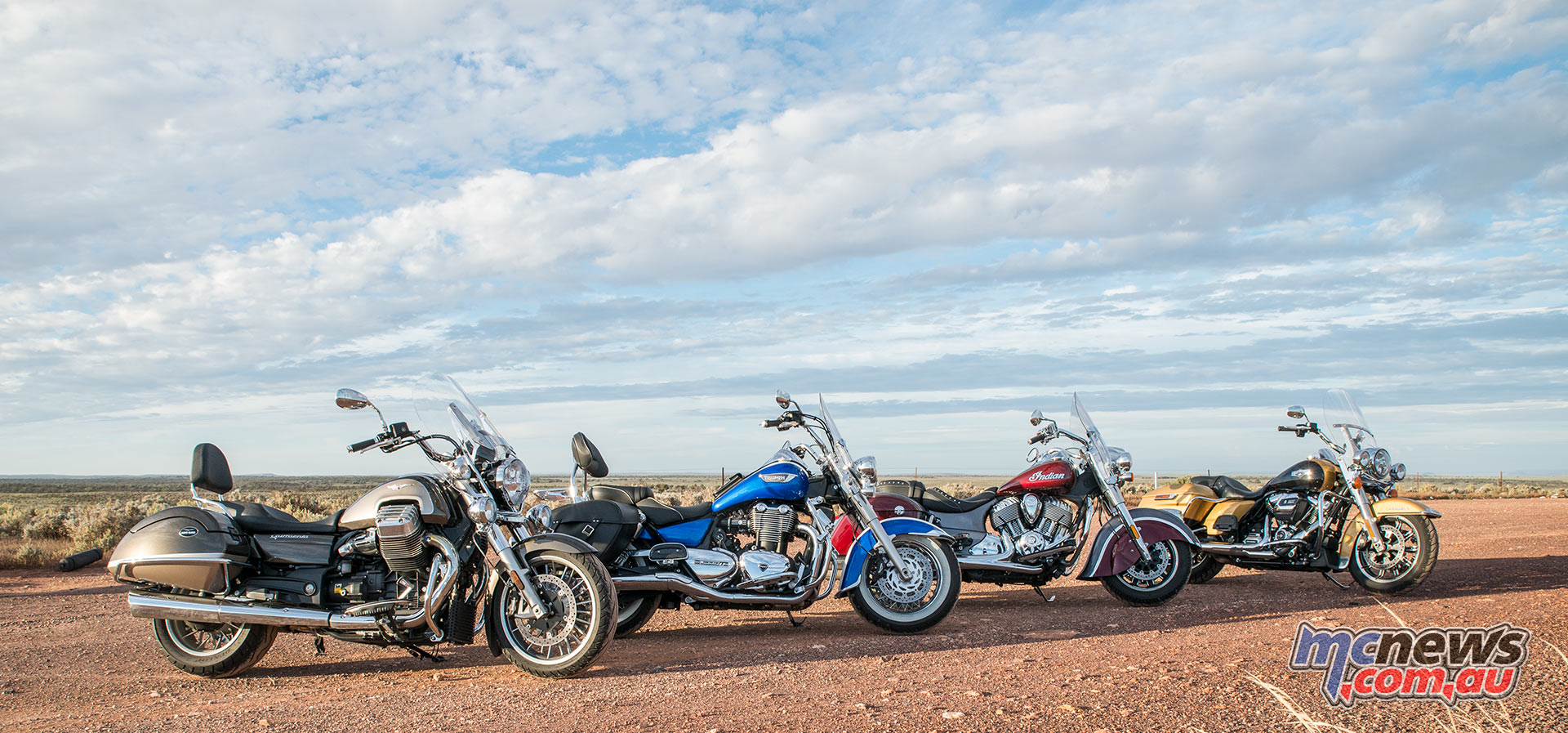
Luggage
All four motorcycles feature standard luggage, the Triumph panniers are soft while the remaining trio all use hard luggage. The Triumph on test boasted a passenger sissy bar and luggage rack, that fit-out is an optional extra and not part of the standard equipment. The Sissy bar on the Moto Guzzi, however, is standard. The Triumph also boasts the least luggage capacity, its leather bags holding a claimed 52 litres, while the hard panniers on both American machines stow 64 litres of gear. The Guzzi then gazumps them all with 70-litres of capacity.
Only the Indian offers remote central locking of the panniers, which is a nice touch.
Standard Luggage Capacity
- Triumph Thunderbird LT – 52 litres (soft)
- Harley-Davidson Road King – 64 litres (hard, lockable by key)
- Indian Springfield – 64 litres (hard and with remote locking)
- Moto Guzzi California Touring SE – 70 litres (hard, lockable by key)
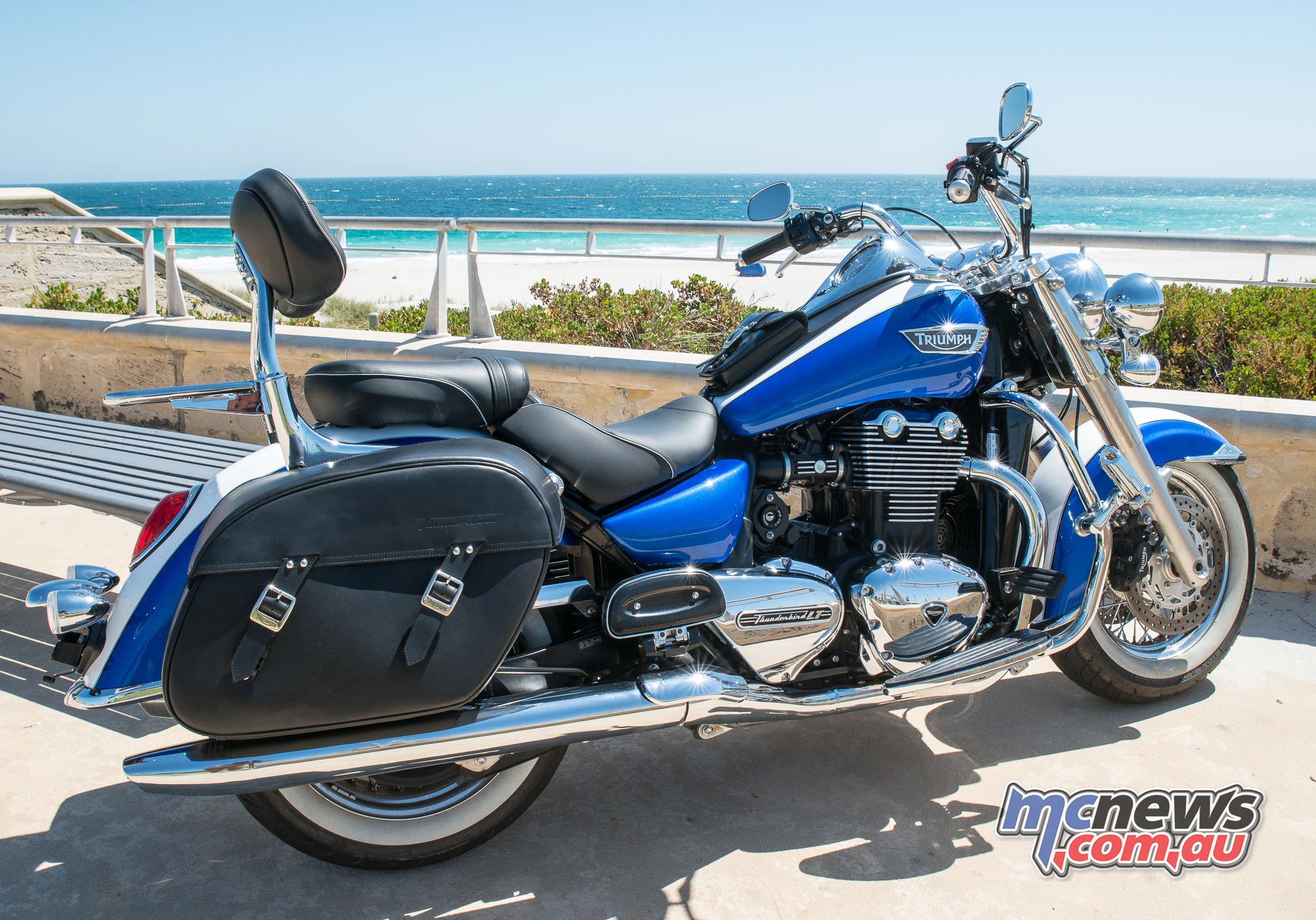
Fuel Economy / Touring Range
Harley’s Road King not only offers the largest fuel capacity, at 22.7-litres, but also displayed the best fuel economy on our 4000km sojourn across Australia. The Harley did have the most kilometres under its belt prior to the test, with already 2500km on the odometer prior to our departure. The Harley was also the only bike not to have a swag strapped to the back, thus there may have been some small advantage there, but I know from previous experience that the late generation Harleys are remarkably fuel efficient, and I expected the Milwaukee machine to achieve the best fuel economy.
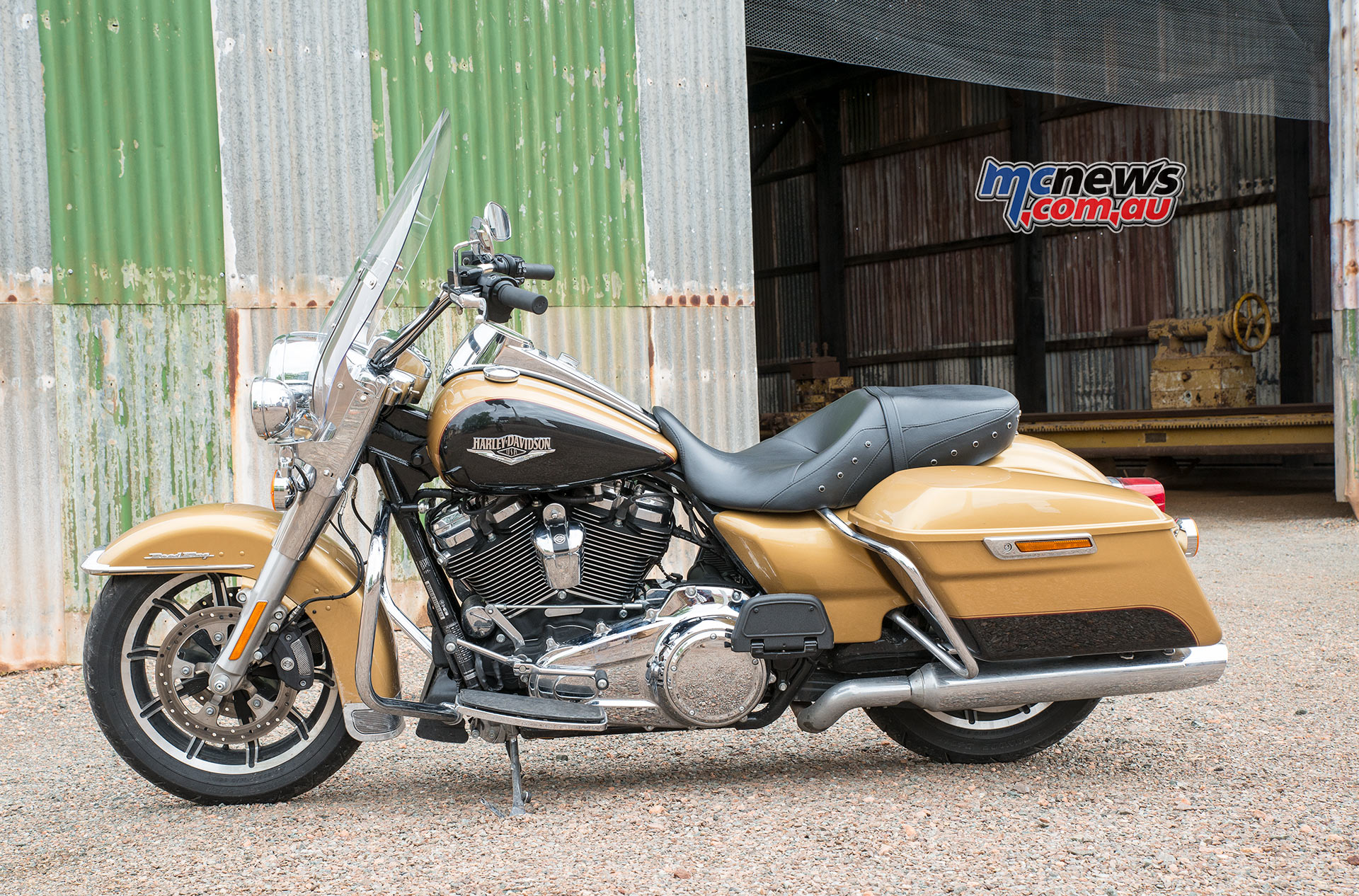
Triumph’s Thunderbid LT boasts a 22-litre fuel capacity and early indications were that it would display the worst fuel economy on test. After the first 2000km though the Triumph’s economy improved markedly, as the engine was more run-in, and it started to match the Harley for economy. The Harley achieved a respectable 5.89 L/100km, pipping the Triumph at the post by 0.18 L/100km, the British machine achieving 6.07 L/100km. It would have been interesting to see the final results had the LT been completely run in from the start, as it must have been quite tight, it is the only fully water-cooled machine here thus you would expect its engine to be built to much finer tolerances than the other bikes on test. The Triumph may have also fared better in the dyno wars we undertook in part two of our trip with more kilometres under its belt, it did best the American machines for power in our tests but perhaps a longer run-in period may have helped the British bike get closer to the Harley in the torque wars.
Indian’s Springfield carries 20.8 litres of unleaded and was the third best performer in the fuel economy stakes. Albeit around 10 per cent less fuel efficient than the Harley. As we mentioned earlier in the piece, the Indian was fitted with stage one pipes and corresponding fuel map, which felt far from perfect, and may have contributed to its relatively poor economy results. The Indian arrived at Sorrento Beach with an average of 6.60 L/100km for the trip.
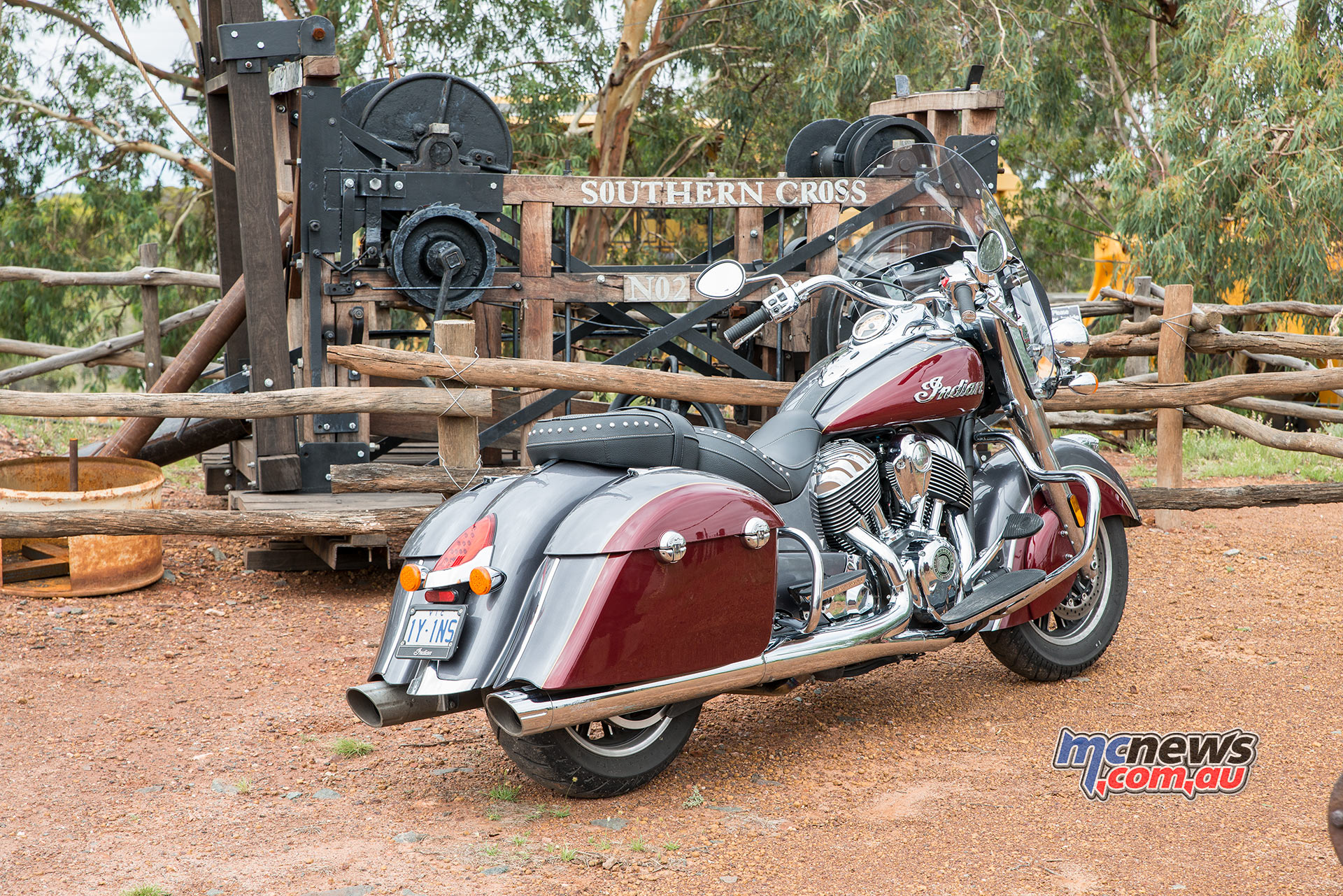
The Moto Guzzi had the smallest tank, 20.5-litres, and performed the worst in the economy rankings, the Italian machine averaging 6.65 L/100km. It would be interesting to see the economy figures if sixth gear in the Guzzi was taller. The Guzzi had the highest RPM at cruising speed by 700-800 RPM, there would be no doubt the average would have been closer to the Harley or Triumph if the gearing had been closer.
The Moto Guzzi used just over 240 litres for the trip, compared with 222 for the Harley. Given the average price of unleaded was $1.53 the Guzzi cost additional $27.54 over the trip. This almost seems like nit-picking considering the length of the trip. The real cost would need to be balanced against servicing the four bikes, and on servicing costs the Guzzi should come well out in front on that equation.
Below is the touring range to empty that would be reached, according to the average fuel consumption we achieved calculated against the claimed tank capacity for each machine.
- Harley-Davidson Road King – 22.7 litre tank – Achieved economy 5.89 L/100km – Range = 385km
- Triumph Thunderbird LT – 22 litre tank – Achieved economy 6.07 L/100km – Range = 362km
- Indian Springfield – 20.8 litre tank – Achieved economy 6.60 L/100km – Range = 315km
- Moto Guzzi California Touring SE – 20.5 litre tank – Achieved economy 6.65 L /100km – Range = 308km
It is always nice to have plenty of range in reservce thus the much longer ranges achieved by the Harley and Triumph are certainly strong points in their favour.
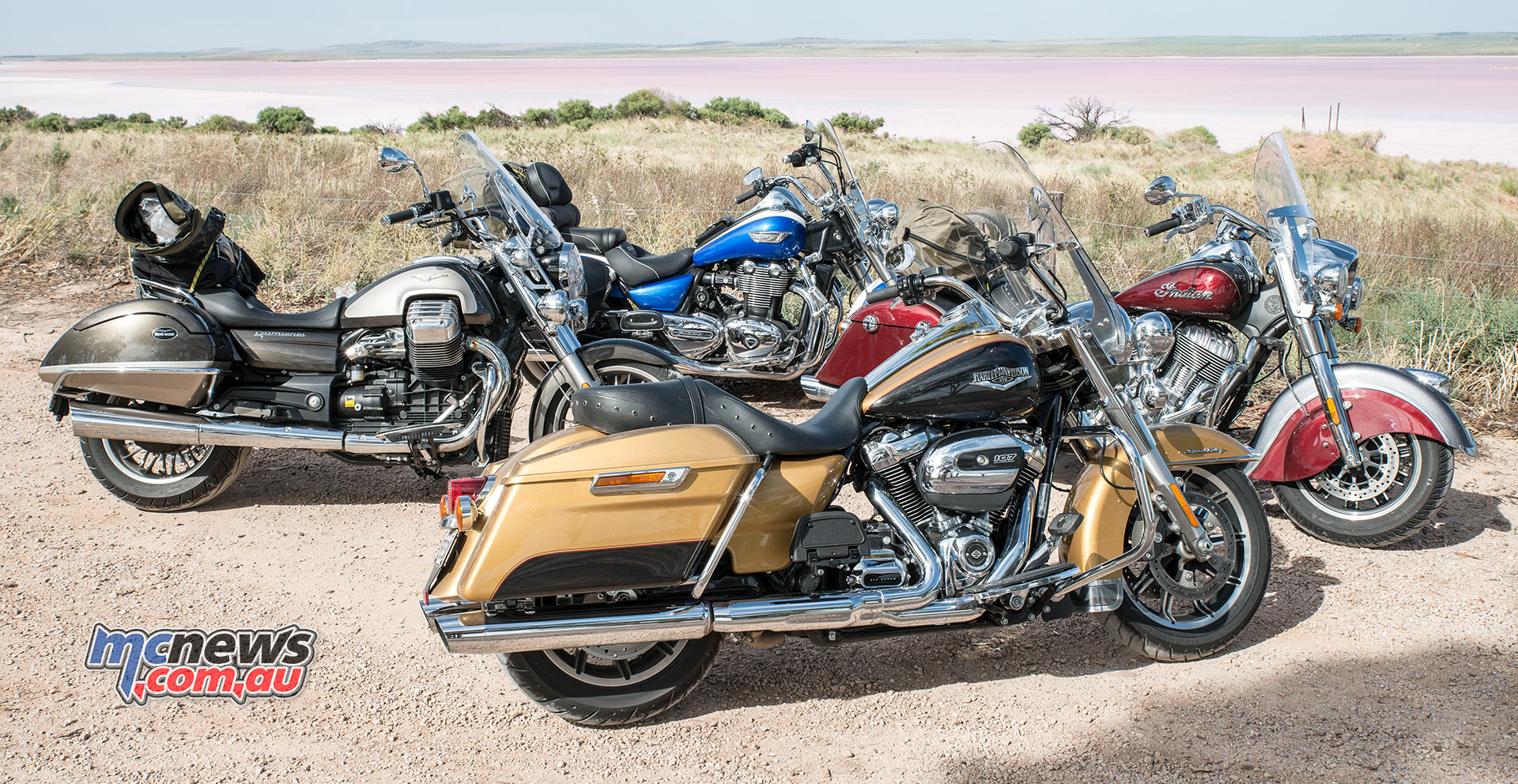
Price
On the value side of the equation the Triumph simply can’t be beat. At $23,9oo +ORC, or at the moment on special from $22,500 ride away, the Thunderbird LT is a lot of bike for the money.
Undercutting the Moto Guzzi by a few grand, and almost a whopping ten grand cheaper than the American bikes, this is one area where the Triumph holds all the aces.
- Triumph Thunderbird LT – $23,900 + ORC
- Moto Guzzi California Touring SE – $27,000 + ORC
- Indian Springfield – $33,995 ride away
- Harley-Davidson Road King – $33,995 ride away
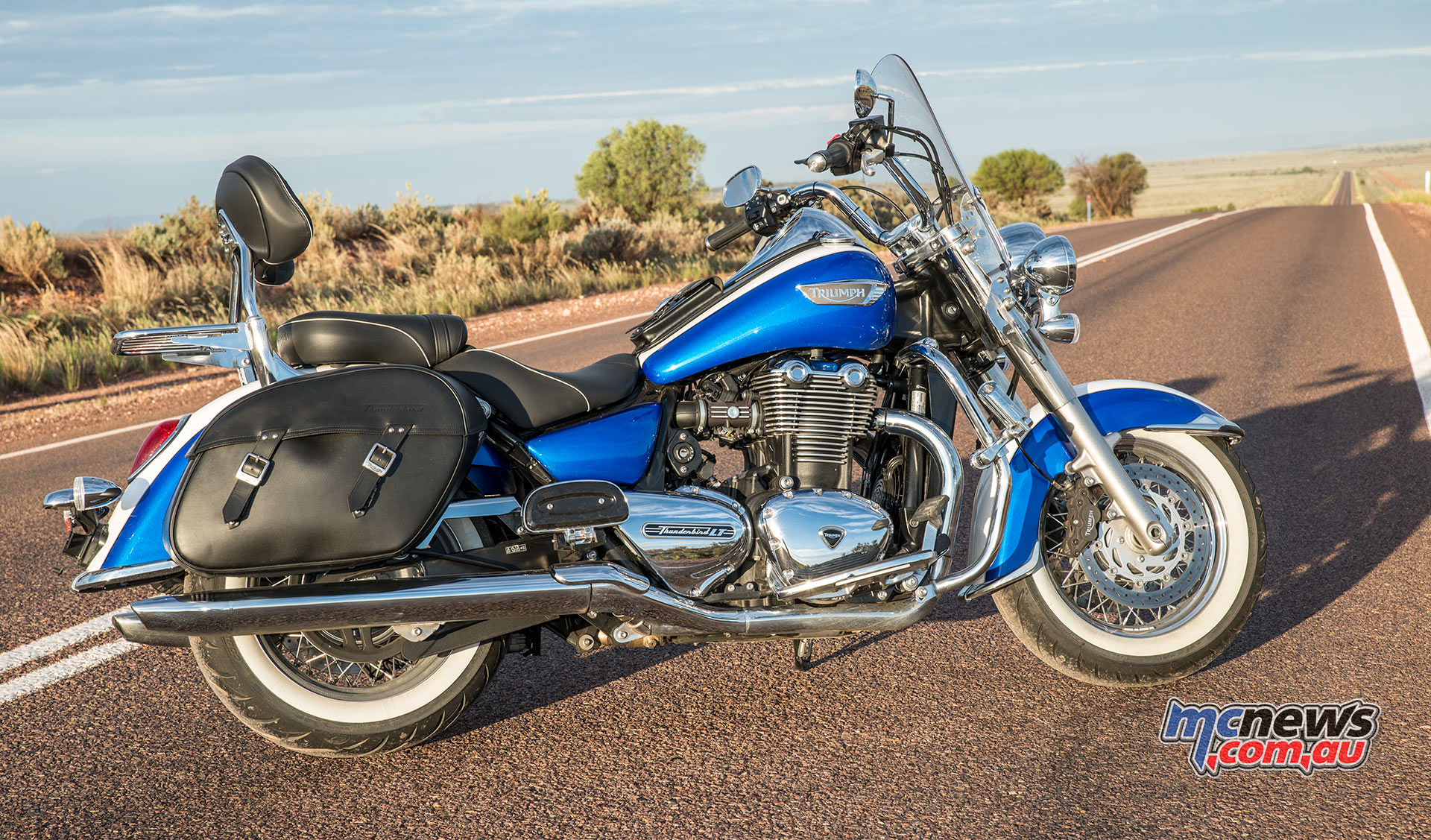
Your Four Testers
For this cruiser comparison I recruited three friends to join me on this trip, with varying levels of motorcycling history and riding expertise, with myself, Gavin and Darren all having met while in the Military. With 35 years of service between the three of us, Gavin maintaining the aircraft, Darren tracking the aircraft, and myself in control of the aircraft. Darren and I first met while we were serving on HMAS Swan as teenagers, more than 25 years ago, and have been great mates ever since, in fact, I’m godfather to his kids and was best man for his first marriage, his son taking the honour on his second time around. Like myself, Darren and Gav are 44, but, importantly, I’m the youngest, by a few months…
Where I went into riding motorcycles and writing about it, both Darren and Gav went into the mining industry, with Darren now working in outback Queensland, while Gav is in a maintenace management role at a mine on an island off Indonesia. Both fly in-out from their Western Australian homes.

Darren has owned quite a few bikes, starting with a Z50, then moving on to a YZ80, KX125, and an RM125, yes he was the one with the generous parents… Then he moved onto an XT250, which he rode while we explored much of Western Australia together in our early 20s. Darren then had a GSX-R600, on which he almost killed himself which put a stop to his riding for a while, as he had two young children to think about. When he returned to two wheels it was aboard a 650 V-Strom about five years ago, and he’s done a fair few tours on that since, including a previous ride across Australia. Now he finds himself in the market for a big cruiser, and is taking the Thunderbird LT home at the end of the trip.
Gav on the other hand, started off with a XR200, the first of the monoshocks. Then it was on to a IT250, followed by an RM250, this was still in the Navy days when we rode around the south coast of NSW when based at Nowra. Later he’d own an XJ1100, ZZR1100, a CRF450X he bought from me, and currently rides a 1990 Harley Dyna.
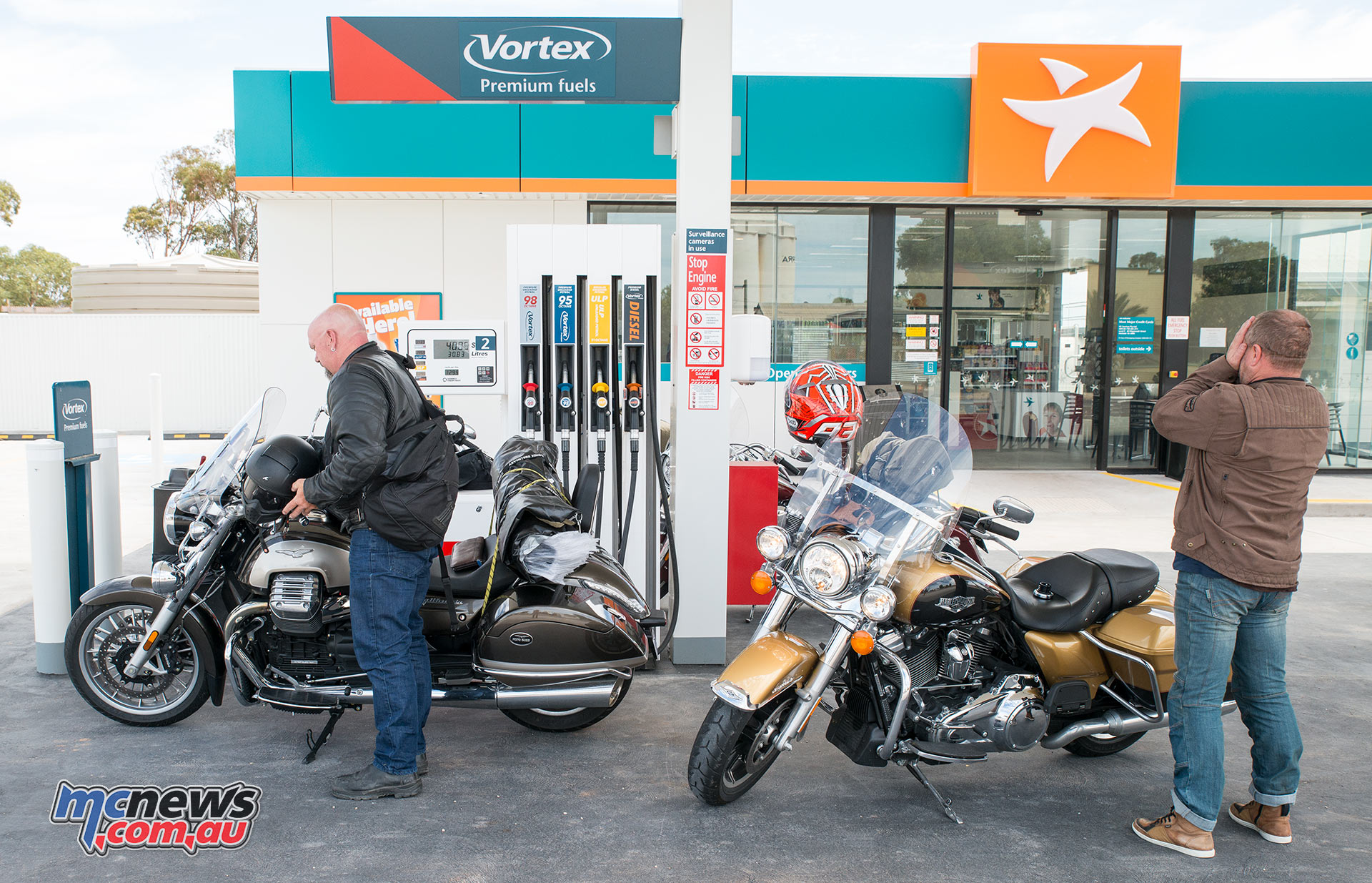
The fourth member of our troop is the only pukka patch wearer, not just a prospect. Christine is a fully fledged member of The Yea Yakkers Patchwork and Quilting Society. Christine also has a long history in motorcycling going back 30-years, including stints in spare parts at Cosway Kawasaki before becoming co-owner of Brighton Kawasaki. She has, however, now been out of the industry for 10-years. Christine has owned numerous machines, including a GPX750, GPz750G, R 80 GS, rides an ER-6 at the moment and just recently added an F 800 ST to her stable. At 55, Christine is the oldest of those riding, and at 5′ 3″, our resident shortarse.
I personally started out on an RM80X, which I saved up for by working before and after school and bought without my parents knowledge and kept at a mates house, it rarely ran for more than five minutes at a time… Then a YZ125J, before hitting the streets at 16 astride a 50cc pedal start Motobecane, which I broke three number plates off while doing wheelstands. Then it was on to a GS750 with flatslides and hot cams, followed by a GSX750, an RF900R, then an XT600, DR650, and a VFR800. A ZX-9R was then followed by a DRZ400E, a couple of CRF450Xs, before I then went through a series of Fireblades, starting from a 1993 model, then a ’94 and a ’96, through to Wayne Maxwell’s Australasian superbike winning Fireblade SP of 2014. I still currently own three of those Fireblades.
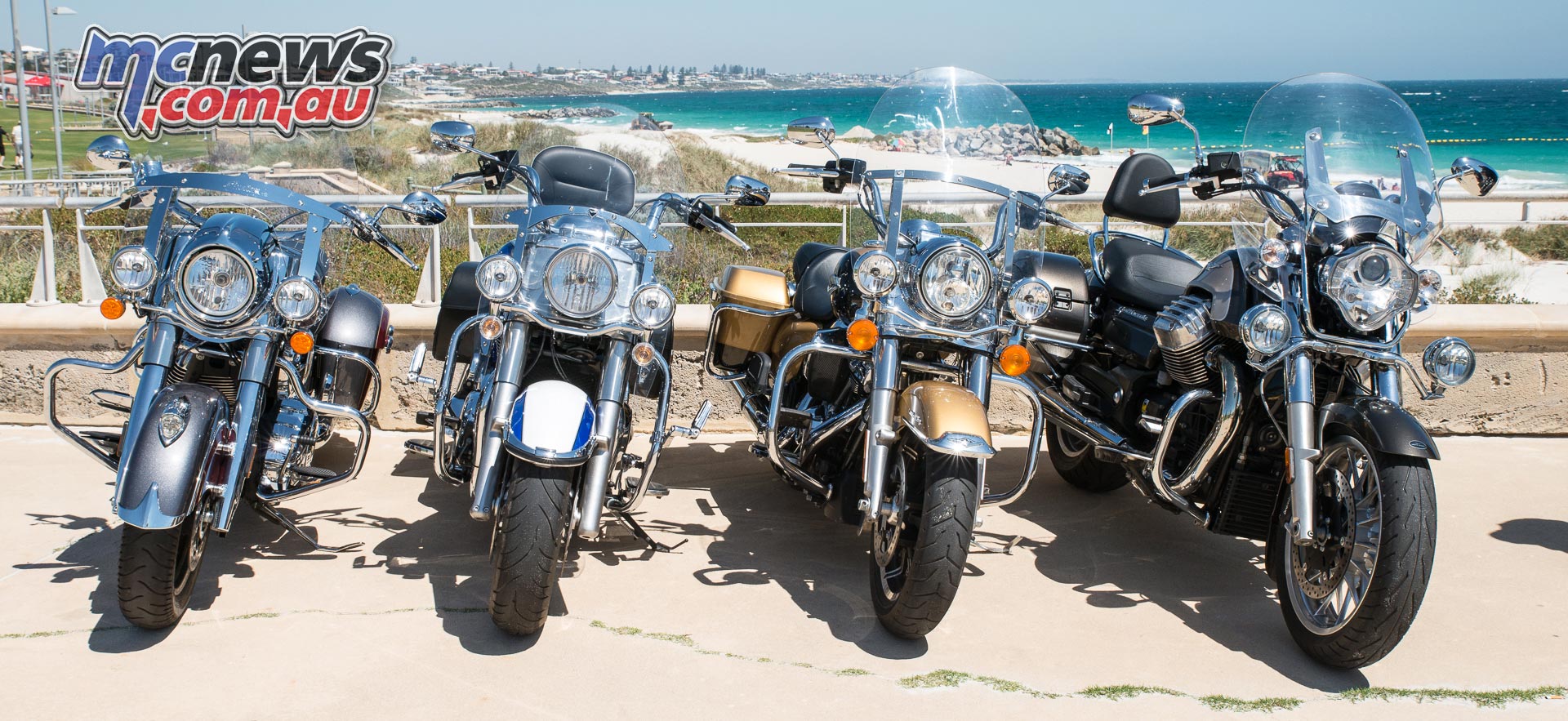
In part six we will go through our respective highlights, and lowlights, of each machine and start to reach some conclusions, stay tuned…






